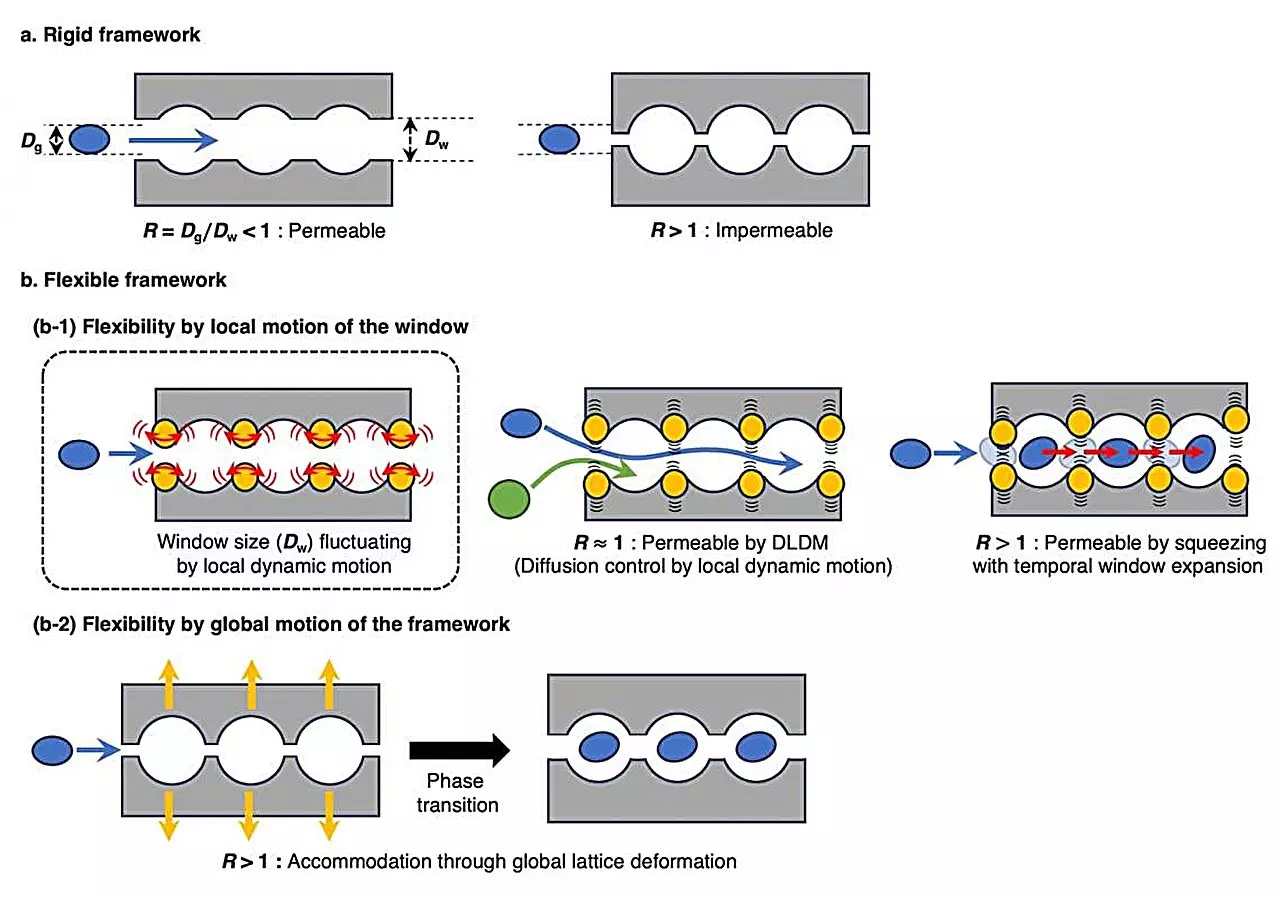In a groundbreaking study, researchers have fundamentally altered our appreciation for porous coordination polymers (PCPs), also known as metal-organic frameworks (MOFs). Initially reported in 1997, these innovative materials were revealed to have a significant capacity for gas storage while also belonging to a category of “soft” PCPs—properties presumed to have only manifested in more contemporary materials. This revelation not only adds depth to our understanding of PCPs but also illuminates potential pathways for future advancements in the creation and application of these versatile materials.
At their core, PCPs consist of intricate networks formed by metal ions, which are intertwined with organic molecules. This unique construction generates numerous minuscule pores capable of trapping and storing various gases and liquids. The functioning of PCPs can be compared to that of a sponge specifically designed to absorb gases instead of liquids, as noted by Susumu Kitagawa from Kyoto University. These materials present extraordinary capabilities; they are pivotal in not only storing clean energy gases like hydrogen but also filtering industrial gases and detecting trace gases for air quality monitoring.
The term “soft PCP” refers to the ability of these materials to adapt their structure in response to the gases they come into contact with. Unlike their rigid counterparts, soft PCPs can adjust to accommodate more gas—akin to how a flexible sponge can alter its shape to take in additional liquid. This flexibility significantly bolsters their efficiency in gas capture and storage. Hirotoshi Sakamoto, the study’s lead author, emphasizes this adaptability, pointing out that it enhances the material’s ability to perform its intended functions effectively.
Using state-of-the-art techniques such as single crystal X-ray diffraction, the researchers scrutinized earlier PCPs, revealing their atomic arrangements and the manner in which these structures change upon gas interaction. Among these, Co-TG, a pioneering PCP developed over two decades ago, has now been shown to possess a unique capacity for adjusting its shape. This characteristic was overlooked in earlier assessments, suggesting that Co-TG and similar materials not only excelled in gas adsorption but did so in remarkable ways due to their inherent “soft” properties.
Recognizing that early PCPs were indeed harbingers of modern soft PCPs transforms our historical perspective on gas adsorption technology. These pioneering materials provide crucial groundwork for the ongoing development of advanced PCPs. The implications of this research are far-reaching, potentially influencing various fields including gas storage and separation technologies, carbon dioxide capture strategies, and the advancement of hydrogen fuel cells—a clean energy solution for the future.
The significance of revisiting and reinterpreting historical data using contemporary techniques is profound. By shedding light on the overlooked characteristics of early PCPs, the research team’s findings encourage a re-evaluation of established norms within the field. Kitagawa aptly concludes that revisiting the past can yield new insights, reinforcing the notion that scientific understanding is continually evolving. This fresh perspective on gas adsorption history opens doors for the exploration of new capabilities within these multifunctional materials, paving the way for innovative applications that could reshape our approach to energy and environmental challenges in the years to come.
As the research community grapples with the implications of these findings, there exists a clarion call to further explore the properties of not only existing PCPs but also to search for new structures that may offer even greater adaptability and efficiency. By encouraging interdisciplinary collaboration and leveraging advanced analytical techniques, scientists and engineers can unlock new potentials in gas storage technology that could significantly alter the landscape of energy solutions globally. The journey into the depths of porous coordination polymers is just beginning, and the potential innovations that lie ahead are both exciting and essential for a sustainable future.


Leave a Reply